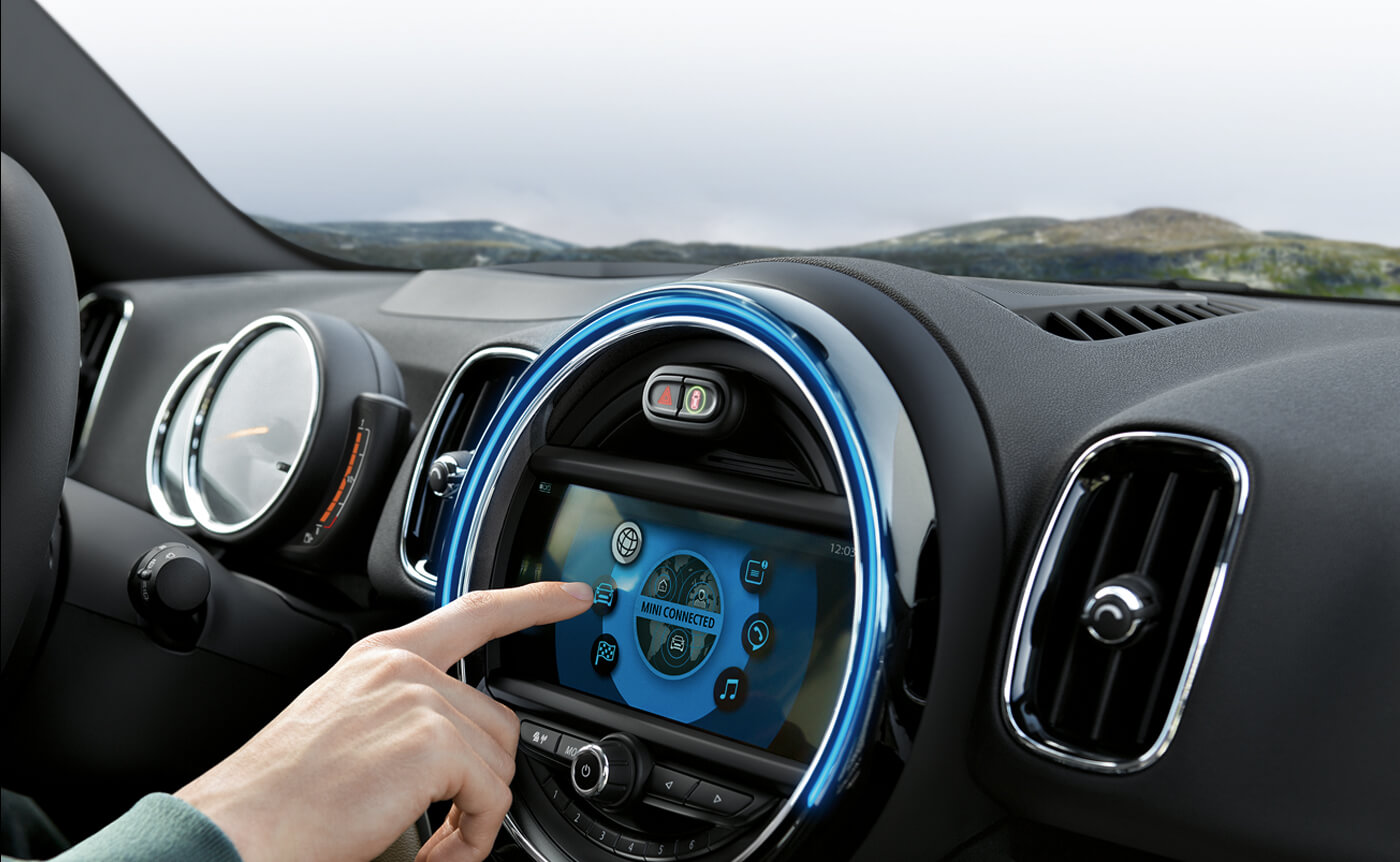
The new Audi AI system has been installed in your car. You've installed the new Audi AI system in your car. But how do you activate it and control it with the audi button? Learn more about this topic in the article. We'll show you the basics of using the audi Ai button to control the system. It is so simple, you'll be amazed at how easy it is! Activate the system and enjoy the benefits of Audi AI! Just press the button and your Audi will do the rest!
The audi Ai button activates the system
The Audi AI button activates remote garage/parking pilot. The system will become available in 2018. It requires the driver to press a button on their smartphone and then hold it for the whole maneuver. The central controller for driver assistance will continually compute and combine data from sophisticated sensors to give an accurate view of the surroundings. This image will guide the driver towards the correct parking spot and will allow him or her to park the car safely.

The Audi AI button can be used to activate the traffic jam pilot function. By pressing the button, passengers can spend their time in the car however they choose, whether working, communicating, or simply relaxing and napping. The AI system will also use sensors to determine if a vehicle crosses a lane. The system is capable of operating highways with physical barriers. The system can drive at 60 mph.
The car's artificial intelligence can also learn the habits of its passengers. The system is able to help the driver make more enjoyable journeys or save time. The system will make the journey more enjoyable. Additionally, the driver will be able to spend more of their time in the car and not wait. The driver can make calls on their smartphone from the car while they drive. On the center console is located the Audi AI button. During the entire process, you must hold the button down.
The audi-ai button allows you to control the system.
Audi AI button allows for autonomous parking and garage functionality. This system triggers the central driver assistance controller to combine various sensors and continuously compute an imaging of the surrounding area. During parking, the driver simply holds down the Audi AI button to monitor the manoeuvre. The car's dashboard displays a stylized image showing the rear of an Audi A8. The driver can also exit the car, while the AI performs the parking maneuver.
Once activated, the Audi AI traffic jam pilot will automatically keep a safe distance from the car ahead and steer autonomously to avoid obstacles. The system uses a number of cameras and sensors in order to detect obstacles. The system initiates the traffic jam pilot function by pressing the AI button at the center console. The system works with all road surfaces, even multi-lane roads.

While the Audi A8 has the Level 3 autonomous driving feature, the Q8 for the US market does not have it. The system is still called Park Assist Plus and will be available beginning in MY2021.
FAQ
What should I know about car mechanics
To work as an auto technician, you don’t need to know much about cars. Only you need to know how things work. Most people start by fixing things like changing tires or fitting brake pads.
It is important to be able to read and understand diagrams as well as written instructions. You must also be able judge if parts need to replaced or repaired.
It's important to remember that you shouldn't attempt to repair vehicles without having received proper training and guidance. This is especially true for expensive components, such as transmissions and engines.
Although you won't have to know much about automobiles, you must be familiar with the basics of mechanical engineering as well as physics. This means understanding the principles behind how engines work and how brakes function.
It is important to realize that you must be ready for all types of situations. If your vehicle has been in an accident, you might need to be able to handle it. You will also need to be able to deal with accidents and breakdowns.
You should also be open to learning quickly. Not only will you need to be capable of diagnosing problems, but you also need to be able perform simple maintenance tasks like tightening nuts.
Is it worthwhile to become a mechanic?
The answer to that question depends on what your life purpose is. If you're looking for money, then it's true. But, if there are meaning and purpose in your life, then it's not.
You don't need to be a mechanic if you don't know how. It's not going to make you rich. It won't make you famous. You won't be famous.
You'd have to spend years learning how things work. You would still need to hire someone to fix your car if it breaks down. It's the reason most people don't bother. They find something more worthwhile.
In conclusion, if money is your main goal, you should go ahead. But if you want to live a meaningful life, stay away from the mechanic's industry.
What does it take for a mechanic to be a good one?
Expert mechanics take years of practice and extensive experience. A professional mechanic will teach you how to fix cars.
You will have to spend time in a garage learning about cars and mechanics. You will need to be familiar with mechanical engineering books about mechanics, car design, and other topics.
Additionally, you will need to attend an auto school.
It is important to get started early. You don't have to wait until you are older to start studying automotive technology. Get started now if you are interested in becoming a mechanic.
What qualifications is required to become an mechanic?
To become a technician, you will need to pass a series exams. These exams include:
-
A general knowledge exam
-
A practical exam
-
An apprenticeship test
These tests are designed to ensure that you understand the basic concepts of mechanical engineering and physics before you start working as a mechanic.
You'll be eligible for work as a mechanic after you have passed the tests. An apprenticeship is still required. This will involve trade training.
To be able to repair vehicles, you'll need classes or workshops. Working alongside skilled mechanics is also a must.
You'll need a high level of concentration and attention to detail if you want to succeed as a mechanic. You will need to pay careful attention to every aspect when repairing vehicles.
To become a successful mechanic you'll need patience. If you don’t enjoy following instructions, this might not be the right career path.
You could make a great career out of your love for cars and the work that goes into fixing them.
What's the difference between a mechanic and an automotive technician?
These two jobs are very similar but not identical. The mechanic fixes cars while the technician maintains them.
A mechanic must be skilled in manual dexterity and able to complete simple tasks quickly. A mechanic should also be able accurately diagnose and repair problems.
An automotive technician requires more technical skills than a mechanic. They must be able to read blueprints and use tools such as drills and wrenches.
They should also be capable of safely performing complex procedures. They need to be familiar with various types of engines and electrical system.
They must also understand the interplay of different parts.
As a result, a mechanic usually earns less money than an automotive technician. There are many job opportunities in both.
Statistics
- According to the BLS, total auto technician employment is expected to exceed 705,000 by 2030. (uti.edu)
- 52% of Mechanics in the United States think their salaries are enough for the cost of living in their area. (indeed.com)
- There were 749,900 jobs available for automotive service technicians and mechanics in 2016, which is expected to grow by six percent through 2026. (jobhero.com)
External Links
How To
How to properly diagnose your vehicle for repair
To determine if your car needs repairs, you should first look at the symptoms that your car presents. Follow these steps to properly diagnose your vehicle.
-
Check engine lights. Check the dashboard light indicators such as the engine light indicator, the oil pressure gauge, the battery light indicator, the coolant temperature gauge, and the RPM gauge. It could indicate that your vehicle is having problems.
-
Inspect the tire treads. If the tires are worn out, they could cause problems with handling and braking. Also, inspect the treads of your wheels. You should ensure that they are clean and smooth. You can do this by taking off the wheels. Use a flashlight to see how well the treads are worn.
-
You should always monitor the level brake fluid. Keep track of the brake fluid level in your vehicle. This ensures that your brakes work properly. Your brakes may fail if the brake fluid level drops.
-
Test the suspension system. Vehicles usually have a suspension system that helps absorb shocks and vibrations while driving. It improves control and allows for smoother accelerations or decelerations. Your vehicle might feel wobbly, or shake uncontrollably if it has a bad suspension. To test whether your vehicle has a suspension issue, try putting weight on the front or rear axle and observe the movement.
-
Examine the steering wheel. Steering columns are used to connect the steering wheel to the rest of the vehicle's components. Sometimes, steering columns are damaged by accidents. If yours feels loose or shaky, you should replace it.
-
Observe the exhaust pipes. Exhaust pipes move gases from combustion chamber to atmosphere. Your cabin will be effected if your exhaust pipe cracks or leaks. It is also important to repair any bends in your tailpipe immediately.
-
Look under the hood. Check under your hood for any unusual or missing components. Leakage of fluids in your engine could indicate that it is leaking. If you smell something strange coming from your engine compartment you should call a professional technician.
-
It is important to inspect the air filter. Your vehicle's air filter collects dust and debris from the outside environment. A dirty filter can lead to a poor vehicle's performance. Replace your air filter regularly.
-
Verify the fan belt. The fan belt is the link between the engine and the transmission. If the fan belt is damaged, the engine won’t turn. Replacing the belt is simple. You only need a screwdriver or pliers to replace your belt.
-
You should inspect the radiator and hoses. The radiator hose carries water from the radiator to the engine. It can become cracked or damaged and leak hot liquid onto your engine. Repairing the hose is easy with a pair of needlenose pliers or a small wire brush.
-
The windshield wipers should be checked. Windshield wipers work by using electricity to remove rain and snow. If they stop working they could leave streaks behind on your window glass. You can fix the problem by changing the washer fluid.
-
You should inspect the cables. The battery cables supply power to your car's electrical systems. Make sure you disconnect the negative cable before replacing batteries. Failure to do so can damage your alternator.
-
Be sure to check your headlights. Headlights are used to illuminate the road ahead. Bad visibility can be caused by headlights that don't work correctly. Inspect the bulbs for signs of burnt out.
-
Check the lights. When you approach them at night, the lights warn other drivers. You could be distracted and cause an accident if one does not work.
-
You should inspect your brakes. Brakes will reduce the speed of your car in case of an accident. You may lose control of your vehicle and crash if the brakes don't function properly.
-
Make sure to change the oil. Your engine will stay lubricated by the oil. It helps keep metal parts from getting too worn down. Changing the oil every month is recommended.